The Houston Oilers/Tennessee Titans franchise has had one of the best running-back rooms in NFL history, with some of the league's top seasons produced by stars like Earl Campbell, Derrick Henry, Eddie George and Chris Johnson.
But who had the best year?
Henry and Johnson each ran for over 2,000 yards in a single season. Campbell was close, while Oilers' star Billy Cannon (remember him?) set a league record that stood for 34 years.
So who was it? Taking the best season by each notable back and ranking each via a mix of criteria -- including rushing and receiving statistics, postseason honors, team success and the "eye test" -- I've come up with a list of my Top 15.
20. LenDale White, 2007—The six-foot-one, 238 (or more)-pound USC Trojan ran for 1,110 yards after being often ridiculed about his weight the previous year when he showed up at the combine out of shape.
19. Rodney Thomas, 1995—Thomas had a solid rookie season in 1995, rushing for 951 yards and catching 39 passes. Solid -- but had some fumbling problems early on. He did bring some explosiveness to the Oilers' rushing attack.
When he broke a 43-yard run early in the season it was the longest the Oilers had in three years. Later, he had a 74-yard run. It was the longest since 1983.
18. Larry Moriarty, 1984—A solid back on a poor team, Moriarty performed better than the broken-down Earl Campbell who was traded midseason to the New Orleans Saints. After Campbel as traded the 6-foot-1, 240-pound former Notre Dame Golden Domer averaged 76.9 yards rushing and three receptions a game. That would put him roughly on pace for a 1,300-yard, 30-catch 17-game season if prorated to 17 games.
17. Ronnie Coleman, 1975—Coleman's numbers were not stellar for a team that was just starting to turn the corner (going 10-4 in the NFL's toughest division) his 790 yards rushing were vital. He was not a big back (5-foot-10, 196 pounds) but he ran hard. He went undrafted in 1974 out of Alabama A&M because he was deemed too slow for the NFL.
He held the Oilers' starting running back position for three years until the Oilers drafted a guy named Earl Campbell.
16. Mike Rozier, 1987—One of college football's greatest players he never was a big star in pro football.
He did have one very good USFL season and a couple of good ones in the NFL. In 1987 and 1988 he ran the ball well for the Oilers.
In 1998 he ran for more touchdowns but in the strike-shortened 1987 he was second-team All-AFC and including the playoffs ran for just over 1,000 yards. So 1987 is the selection.
15. Fred Willis, 1973—How does a guy with 579 rushing yards end up in the top 15? Well, when you play for a 1-13 team that has a line that can't run block, takes a few shots to deep threat Ken Burrough but mostly dumps the ball off to your backs, it makes sense. The Oilers did that, with Willis leading the AFC in receptions to become the first non-end to lead a league or conference since John (Shipwreck) Kelly did it in 1933 for the Brooklyn Dodgers.
Willis began a trend. For the next seven years, a running back led either the NFC or AFC in receptions. So, taking all things into consideration, it was a good year for the fullback.
The ever-confident Willis then went into the 1974 season asking owner Bud Adams for a $100,000 contract. Adams balked before finally offering $80,000, but Willis rejected the proposal and later was injured. So, the ordeal ended in a standoff, and Willis played the 1974 season without a contract -- having to take a 10 percent pay cut from his 1973 salary per the CBA
Suffice it to say: Willis was overconfident. He didn't get the money and didn't have a season close to 1973 again.
14. Ode Burrell, 1965—Burrell's numbers were similar to Willis, but at least he was recognized by being named to the AFL All-Star game -- the AFL's version of the Pro Bowl. Though he ran for 528 yards, he caught 55 passes for 650 yards -- a yardage total that still is the second-best in franchise history.
The NEA also gave him its "Third Down Trophy," emblematic of the Oilers' MVP in a poll of his teammates. He won by the biggest margin of any AFL player that season, demonstrating what the Oilers thought of his contributions.
13. Travis Henry, 2006—In his career year, Henry gained 1,211 yards rushing and had a 4.5 yards-per-carry average. His 86.5 yards rushing per game are 14th best in club annals.
The former Buffalo Bills' second-round pick even garnered a few votes for NFL Comeback Player of the Year in '06 after returning from an injury the previous season.
12. Sid Blanks, 1964—A rookie who never did much after 1964, Blanks began his career by tying for the league lead in rushing touchdowns, running for 756 yards and catching 56 passes for 497 more yards. he was second-team All-AFL and went to the AFL All-Star game.
He also was in contention for the AFL Rookie of the Year award, placing second in the AP poll and fourth in the UPI.
His 91-yard touchdown run on Dec. 13 against the Jets was the longest touchdown run in club history until Chris Johnson tied it in 2009. Not bad for a running back drafted by the Oilers to play defensive back.
11. Chris Brown, 2004—The 2003 third-round pick had plenty of potential but couldn't stay healthy -- never playing a full schedule in his six-year NFL career. That includes his career year of 2004 when he played only 11 games but still rushed for 1,067 yards -- an average of 97.0 per game, still seventh in team history.
Only the second running back in NFL history to gain 100 or more yards in his first three starts (he didn't start as a rookie), Brown battled through ankle and shoulder injuries and a painful turf toe in 2004. Nevertheless, his 4.9 yards-per-carry were third in the NFL and first among players with 200 or more carries. Michael Vick was the league leader, and Rams rookie Steven Jackson backed up Marshall Faulk that year.
When healthy, in his first eight games Brown gained 810 yards on 166 carries, including three games of 147 yards or more.
10. Gary Brown, 1993—Brown rushed for 1,002 yards in his career year, but he did it in just 195 carries and eight starts. Playing on special teams the first half of the season, he finally carried the ball in Week Eight and then started the final eight games.
During that span, he was twice the AFC Player of the Week and the AFC Player of the Month for November when he ran 91 times for 499 yards. With Brown's explosive runs in the second half of the season, the Oilers rebounded from a 1-4 start to finish 12-4.
It would be great to combine Gary Brown's last half of 1993 with the first half of Chris Brown's 2004 season.
9. Charley Tolar, 1962—The low-to-the-ground fullback (Tolar stood just 5-feet-6) was the first 1,000-yard rusher for the Oilers and the only player under 5-7 to accomplish that feat in pro-football history. All other 1,000-yard rushers have been taller than 5-6.
"The Human Manhole Cover," as he was sometimes called, helped the Oilers reach their third consecutive AFL championship game. They won in 1961 and 1962 but lost by three points in overtime to the Dallas Texans in 1963.
Tolar led the AFL in rushing attempts and was second-team All-AFL, third in the AP and UPI Player-of-the-Year voting and named to the AFL All-Star game.
8. DeMarco Murray, 2016—An All-Pro with Dallas just two years earlier, he was on his third team in three years. The Titans traded for him after a contentious season with the Philadelphia Eagles.
An elite athlete (6-feet-1, 220 pounds and a 4.4 40-yard dash time), Murray helped improve the Titans from a poor rushing team in 2015 to a top-three club in his career year when they went from a record of 3-13 to 9-7.
With the Titans, he made his third Pro Bowl and was All-AFC after running for 1,287 yards and catching 53 passes.
7. Lorenzo White, 1992—A solid back in the Oilers' "Run and Shoot" offense, the former Michigan State Spartan had only one great year -- and that was 1992. He ran for 1,226 yards, had a healthy 4.6 yards-per-carry average and caught 57 passes for 641 yards. He was also a good pass protector when Houston went to six-man protections.
6. Hoyle Granger, 1967—A poor man's Jim Taylor, the hard-running, 225-pound fullback could get tough yards, catch passes and block. And while he wasn't up to the Hall-of-Fame level of Taylor, he was second-team All-AFL and an AFL All-Star game participant in his career year.
In Week 16 that season, he ran for 160 yards and one touchdown and caught a long pass for another score in a 41-10 blowout of Miami. For that performance, he was voted the AFL Offensive Player of the Week.
He finished the season with 1,194 yards on 236 carries (a 5.1-yard average) and six touchdowns. He also caught 31 passes and threw a lot of blocks for halfbacks, one of whom played in the AFL All-Star game with him.
Granger (pronounced Gron-JAY) led the AFL in yards from scrimmage with 1,494 yards and only fumbled once.
5. Billy Cannon, 1961—One of the AFL's first stars, Cannon was first-team All-AFL in 1961 when he led the league in rushing and rushing average. He also was a big part of the Oilers' passing game, catching 43 balls for 586 yards and nine touchdowns and led the AFL in all-purpose yards with 2,043.
In a Dec. 10 game vs. the New York Titans, Cannon set a single-game record with 373 all-purpose yards, a mark that held for 34 years and included 330 yards from scrimmage -- the most ever until the Rams' Flipper Anderson bested it in 1989.
His 216 rushing yards that afternoon are the second-most in AFL history, and his five touchdowns were one of only three times an AFL player scored that many in one game.
A star at LSU, Cannon was a complete back who was a big factor in the Oilers' back-to-back AFL championships in the first two seasons of that league's existence. Sadly, he hurt what he called "the girdle in my back" a couple of years later and lost his lateral movement. With limited effectiveness as a runner, he was converted to a tight end later in his career.
4. Eddie George, 2000—Which season do you pick? 1996? 1997? 1998? 1999? 2000? Any of those would do. But his first-team All-Pro year of 2000 was his best regular season. He had his best year in terms of rushing yards (1,509) and receptions (50), while his 1,962 yards from scrimmage were fourth in the NFL.
He was named the Week 16 AFC Offensive Player of the Week for his 34-carry, 176-yard, three-touchdown performance against the Browns.
It's hard not to pick 1999 when his playoff run contributed to the Titans' Super Bowl appearance, and he was the main cog in the Titans' offense. But in 2000 he was a marked man and still got his yards ... and the Titans still got their wins, finishing 13-3.
3. Derrick Henry, 2020—King Henry's 2020 season was his career year, a season where 2,027 rushing yards and 17 rushing touchdowns speak for themselves. Henry was a consensus All-Pro and the AP Offensive Player of the Year. He was also the AFC Offensive Player of the Month for October and the AFC Player of the Week twice (Weeks 6 and 18).
Like Eddie George, the season before his career year (2019) was also stellar because of playoff performances. But in a year when he had three 200-yard performances, he was the closest thing to Earl Campbell the team has seen.
Not only did he lead the NFL in rushes, rushing yards and rushing touchdowns; he had a career-high 5.4 yards-per-carry average and a league-leading 2,141 yards from scrimmage, the second-most in team history. So, while the team was more successful the previous year and Henry was brilliant in the playoffs, 2020 is the pick in a close call.
2. Chris Johnson, 2009—Johnson's 2009 season was more special than most people realize. Not only did he rush for 2,006 yards, but he had 503 receiving yards, too. His league-leading 2,509 yards from scrimmage are the best in team history -- by a wide margin -- and made it tempting to make him first on this list.
Not only that, but they're the most single-season yards from scrimmage in NFL history. How many people remember that?
The 5-foot-11, 195-pound speedster was unlike the pounders who dominate this list. There was no running over people or stiff-arming them to the ground. Defenders just couldn't catch him, mostly because he had sub-4.3 speed.
Along with that record and 2,000-yard season (the sixth player to achieve that mark), he was a consensus All-Pro and the AP Offensive Player of the Year. He was also the November AFC Offensive Player of the Month and Pro Football Weekly's NFL Offensive Player of the Week for weeks Two, Eight and Ten.
Amazingly, his 5.6 yards-per-carry were only third in the NFL, but the two players ahead of him (Jamaal Charles and Felix Jones) combined for 306 carries. Johnson had 358, so he more than doubled their load and still was just three-tenths of a yard behind.
1. Earl Campbell, 1980—Campbell was not an automatic pick nor was his 1980 season. Both 1978 and 1979 were considered for the same reasons that Eddie George's 1999 and Derrick Henry's 2019 were. Chris Johnson's 2009 season couldn't be dismissed, either, simply because Earl Campbell is ... well, Earl Campbell.
But given everything, in the final analysis Earl's 1980 season wins the big prize.
Campbell was a one-man show, with his 1,934 rushing yards amazing given how much he was targeted week in and week out. In 1980, the "Tyler Rose" had four 200-yard rushing games, the most by any player in a single season in league history. He even threw a 57-yard touchdown pass and cut his fumbles in half.
For his Week Eight performance of 27 rushes for 202 yards (7.5 yards a carry!) and two touchdowns, he was Pro Football Weekly's NFL Offensive Player of the Week. For the third consecutive year, he was the NEA MVP (one voted on by players), a consensus All-Pro and Pro Bowler for the third straight year and the NFL AP Offensive Player of the Year for the third year in a row.
After winning the AP MVP (voted on by a media panel) in 1979, he was second to the Browns' Brian Sipe in 1980. It was the third consecutive year he was second or higher for that award.
Talk about being on a roll.
"Earl may not be in a class of his own," said coach Bum Phillips, "but it don't take long to call the roll."
Exactly.


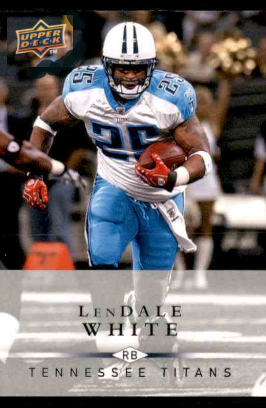




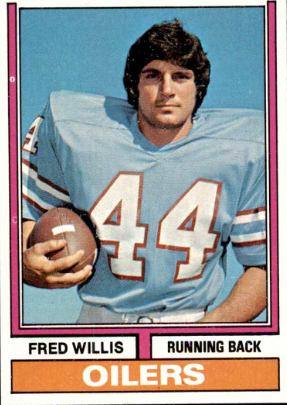
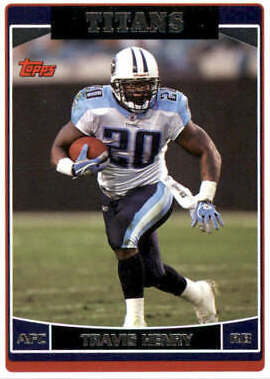




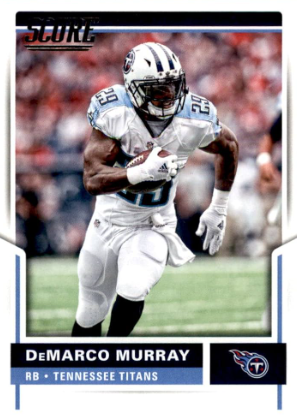
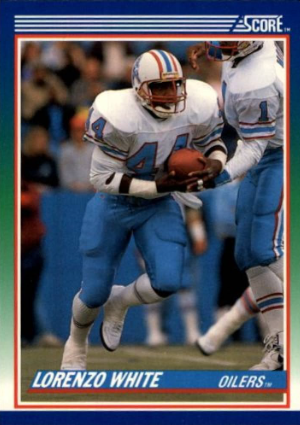





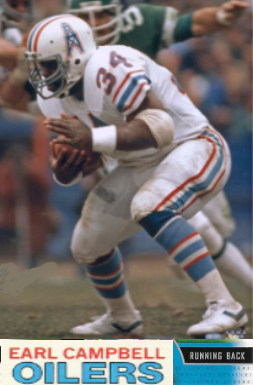
You're list is wrong. Derrick Henry is better than Earl ever was. Bigger, faster.
ReplyDeleteFrom Brian wolf ...
DeleteI respectfully disagree CM ...
I like Henry too and feel he will make the HOF but Earl had way more impact from his rookie season onward, while Henry took three seasons before he finally decided to become a great back.
Both are great players, as was Eddie George and Chris Johnson but Campbell was the Oilers first superstar running back in an era where defenders were trying to take players heads off, that is outlawed today. He carried his team as much as Henry and George had.
BW ...
ReplyDeleteGreat list and history lesson, John ...
I agree about Campbell's 1980 season topping the list. He truly carried this team even more so than 78-79, especially with QB Stabler throwing for only 13 TDs. Like Walter Payton in the NFC, every defender knew Earl was coming, all game long.
Its easy to list Johnson's spectacular 2009 season as #2 but I am going to list Eddie George's 1999 season, due to regular and postseason performances, as the Titans went to the SB. I would put Johnsons' and Henrys' 2000 yard seasons at #4 and #5 on the list. Great achievements, especially Johnson's 2509 scrimmage yards in 2009 and Henry's 17 TDs in 2020, but with 16 games, not the feat it was when OJ Simpson did it in 14 games in 1973. Besides, like the Tyler Rose from the 1978-1980 postseasons, Henry was wore out and ineffectual in his subsequent postseason, while Johnson and the Titans only won 8 games in 2009, which brings me to my #3 on my list ...
Derrick Henry's 2019 season, where he literally became the player everyone knows of and admires today. Like John said, a monster postseason, that not only put the Titans in their first AFC Championship game since 2002/03 but spotlighted his devastating stiff arm, that national audiences' proudly showed off on social media. Henry had the great 2020 season just like Johnson in 2009 and George in 2000 but the team underachieved in postseason.
Lots of running legacy with this team dating back to Billy Cannon but with no SB wins, I had to go with postseason success over 2000 yard seasons. I was very disappointed that Chris Johnson tailed off after his great 2009 season. I felt had he maintained his big play ability, similar to Tony Dorsett, he would have made the HOF already ...
yeah, both Henry and George previous seasons were considered but if I did that then Earl Campbell's 1979 would have had to be the pick to be consistent.
DeleteOnce I decided on Earl Campbell being first -- (postseason average) then I couldn't penalize Henry and George in 2020 and 2000 for their post seasons.
If it were a combined pick ... then it would have been 1979 Campbell as #2, and then Chris Johnson moves to #1, Henry 2019 #3 and George 1999 4th.
But people will always have different opinions and none of them are wrong and no one is "right". Just a chance to discuss history.
BW ...
ReplyDeleteFans cant forget about Gary Brown's great 1993 season as well, not for his numbers but what he meant to the Oiler offense. The run and shoot and Moon were struggling, as Warren continued to get hit but Brown ran hard and brought balance back to the offense. Run blocking and better health also helped the offensive line get back into a groove that rejuvenated the defense as well as the team rolled to the division title. Unfortunately, the bye week helped the team get too cocky as the Chiefs came in and hammered Moon in the playoff loss. Brown would never have a season like that again and once Moon left, the owner decided to move the team.
Along with Sid Blanks and Ode Burrell cards, I had a Charlie Tolar football card almost 60 years ago, and was fascinated by his size. I never saw any of them play - the AFL game was on when the NFL game was on and we probably were never shown a Houston Oiler game anyway where I lived in central Illinois.
ReplyDeleteThere is a video on Twitter of Tolar in 1962 running a sweep to the right side that gives one a pretty good idea of his running style. https://twitter.com/NSUDemonsFans/status/1153498285723852800